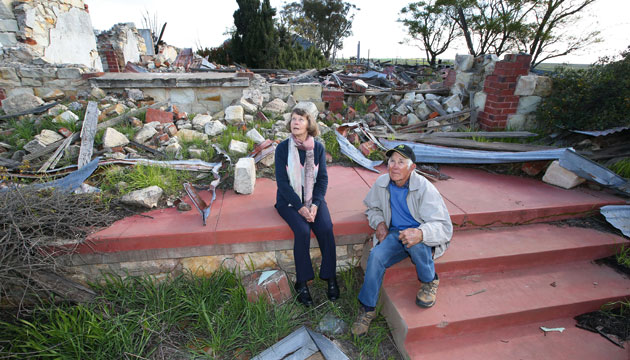Almost every day there’s an earthquake somewhere in Australia. Most of them are in the bush.
Story Ken Eastwood
A jumbo jet slammed into the ground beside Mark Muir’s Mordallup Angus Beef Stud in south-western Western Australia at 1pm on September 15 last year. Or so Mark thought. “It was very loud – sort of like a sonic boom hit us, and it was a jolt from all directions,” he says. “I couldn’t pinpoint where the noise was coming from and it lasted a good minute or so.”
It wasn’t an aeroplane disaster, thankfully, but a 5.7-magnitude earthquake, the first of many shocks and aftershocks that would strike the area over the next few months. It destroyed one building and created a 3-kilometre, 40-centimetre high rupture in the earth across the paddocks of Mark and his neighbours. “You have a ‘woof’, like an air pressure shockwave, then the whole house started rattling,” Mark says. “You didn’t know what the hell was going on. That was the first time anyone has experienced anything like that around here.”
The Great Southern region of Western Australia and the Goldfields have become a hotspot for earthquake activity in Australia, along with Gippsland in Victoria. On average, our continent cops more than an earthquake a day. About 100 a year are stronger than magnitude 3, and usually one a month is big enough to be noticed by people.
Our second-largest earthquake in 20 years occurred off the coast of Coral Bay in the Pilbara on December 16 last year, with tremors felt up to 1000km away. Kristen Anderson, at Ningaloo Reef Dive & Snorkel, says everyone in Coral Bay felt the 5.9-magnitude quake. “We had some construction work happening in town and we thought maybe they’d started up on the roads again at 10.30pm,” she says. “It rattled the ground, but it wasn’t enough to knock things off shelves. We all went out on to the road and we were all super confused.”
“Most of our big earthquakes have tended to occur in remote and little populated areas,” says Wayne Peck, senior seismologist with the Seismology Research Centre, which operates a network of monitoring equipment across the country. “Earthquakes tend to cluster in time and space, and that tends to change over time.”
This story excerpt is from Issue #125
Outback Magazine: June/July 2019










